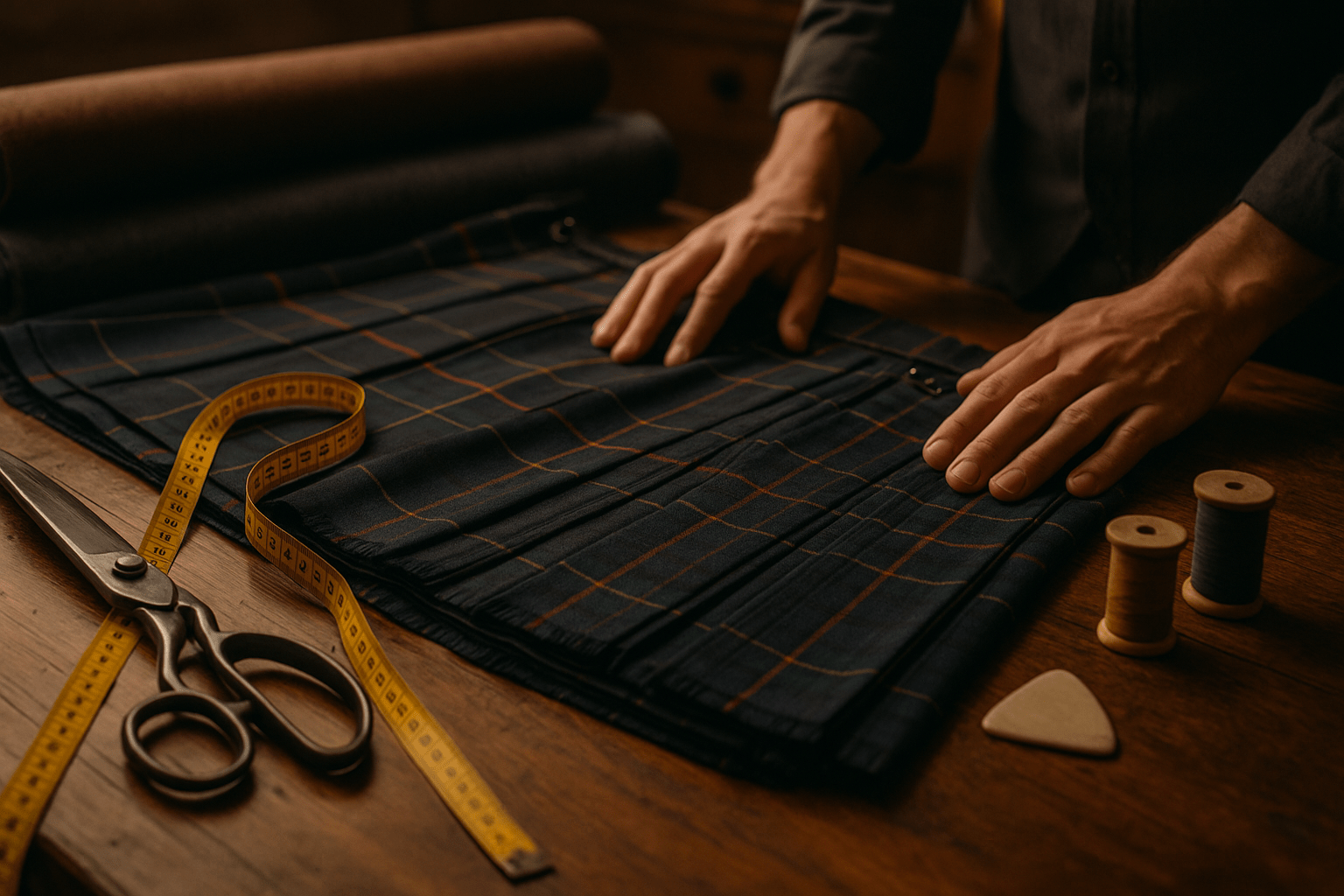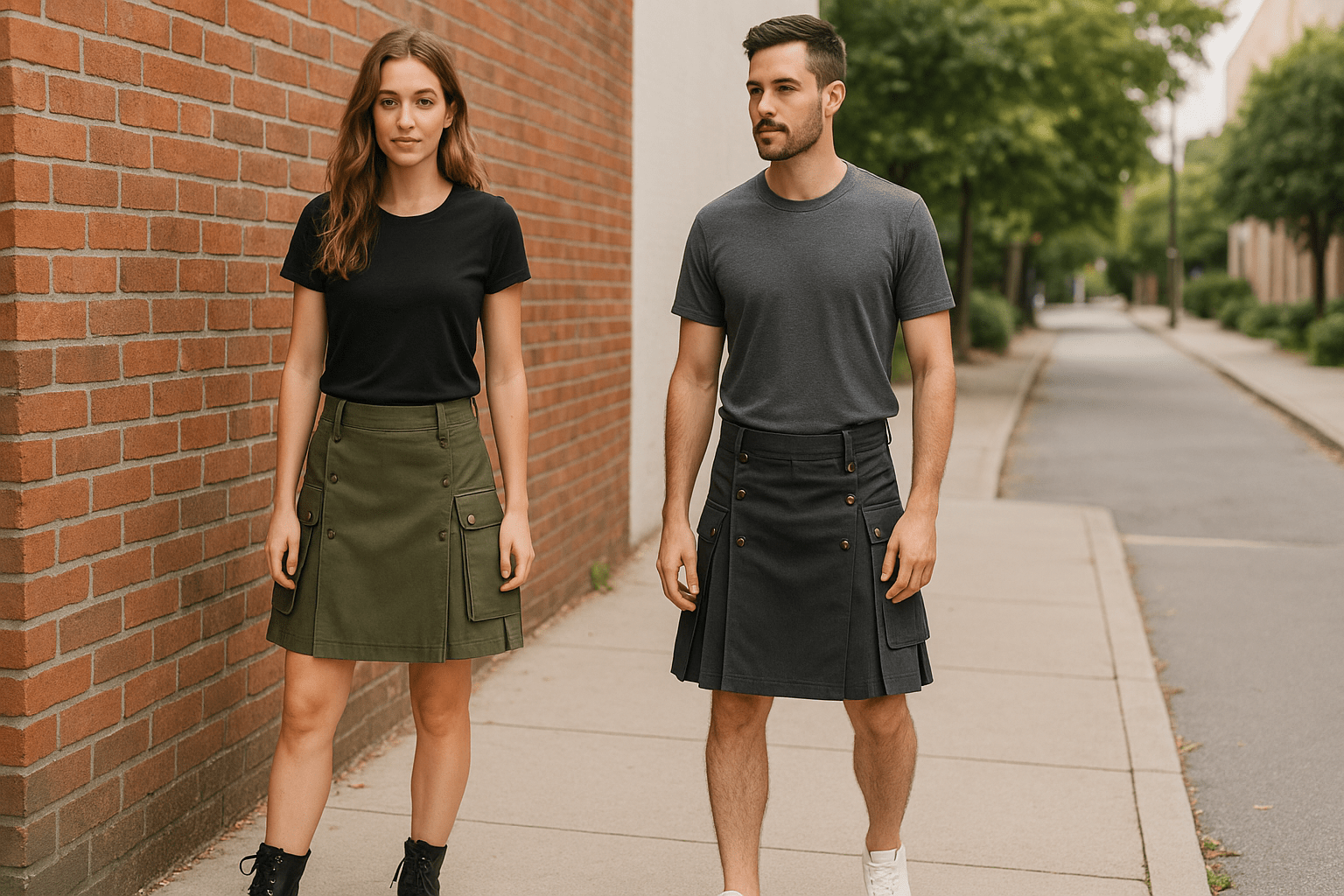Article: Craftsmanship Matters: Inside the Making of a Quality Kilt

Craftsmanship Matters: Inside the Making of a Quality Kilt
Behind each great kilt is the craftsmanship of true skill. From the attention to the selection of fabric to the attention to each pleat, a quality kilt demonstrates dedication, heritage, and skill. In this blog, we take you behind the scenes to look at how kilts are constructed, what makes a quality kilt, and why true craftsmanship really counts.
1. The Fabric Choice
Tartan Wool: Classic selection, full of history
Leather: For dramatic, contemporary charm
Cotton Twill: Frequently utilized in utility kilts
Weight, texture, and durability of the fabric all influence the finished appearance and feel of the kilt.
2. Accuracy in Measurement
Kilts are fashioned to:
Rest on the natural waist
Drape to mid-knee
Allow for hip and thigh measurements
A single incorrect measurement can destroy the drape and balance.
3. Pleating Methods*
Knife Pleats: Most popular and graceful
Box Pleats: Create volume and movement
Pleats are pressed or machine-set by hand and require alignment to perfection
4. Stitching & Construction
Reinforced stitches for strength
Double-seamed edges for durability
Waistband, buckles, and lining demand accuracy
5. Accessories That Complete the Look
A full kilt ensemble usually consists of:
Sporran
Belt & Buckle
Kilt Pin
Hose & Flashes
Ghillie Brogues
Every accessory is selected to complement the fabric and occasion.
6. Modern Innovations in Kilt Making
Laser cutting for precision with the fabric
Environmentally friendly dyeing methods
Lightweight materials for comfort
7. Why Handmade Matters
Hand-tailored kilts:
Provide close attention
Enable personalization
Foster classic craftsmanship
Conclusion
A kilt is not just what it seems. It's a result of heritage, skill, and tradition. Be it traditional or modern, the quality of a kilt is in how it's crafted. Customers learn to value what they wear—and what they wear with pride—by learning the process.

